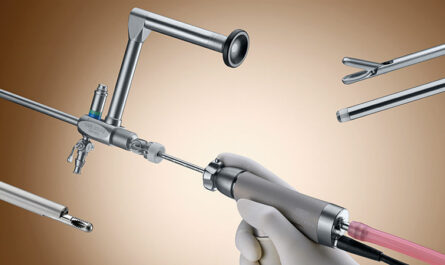
Active implantable medical devices are increasingly being used to treat various medical conditions and improve quality of life for millions of people. These sophisticated devices play a vital role in modern medicine, however many are still unaware of what they are and how they work. This article aims to provide an overview of active implantable medical devices, their various types and applications, as well as discuss some important considerations regarding their use and regulation.
What are active implantable medical devices?
Active implantable medical devices (AIMDs) refer to any device that is intended to be totally or partially introduced, surgically or medically, into the human body through the skin or medical sheath, and that performs an active therapeutic, diagnostic, or prosthetic function. In contrast to passive implants like hip replacements, AIMDs contain an electronic circuitry or mechanical parts that perform an active function in the body to treat disease or monitor physiological status. Some key examples of AIMDs include pacemakers, defibrillators, neurostimulators and drug infusion pumps.
Types of active implantable medical devices
AIMDs can be broadly classified into several categories based on their functions:
– Cardiovascular devices: Pacemakers are the most common type used to treat abnormal heart rhythms by regulating the heart’s beating. Implantable cardioverter defibrillators (ICDs) also monitor heart rhythms and deliver electric shocks to restore normal rhythm if an abnormality is detected.
– Neurological devices: Deep brain stimulators are implanted to treat movement disorders like Parkinson’s disease. Spinal cord stimulators are used for pain management. Cochlear implants can help restore hearing ability in people with severe hearing loss.
– Ophthalmic devices: Angle-supported intraocular lenses are implanted after cataract surgery. Retinal implants are being developed to treat blindness caused by retinal degenerative diseases.
– Other devices: Insulin pumps are used for continuous subcutaneous insulin infusion in diabetes. Vagal nerve stimulators treat epileptic seizures or depression. Artificial hearts temporarily replace a failed heart until transplantation.
Benefits and importance of AIMDs
AIMDs have significantly improved outcomes and quality of life for millions suffering from chronic diseases. Some key benefits include:
– Cardiac devices help manage dangerous heart rhythm disorders and reduce the risk of sudden cardiac death. ICDs alone are estimated to save over 100,000 lives annually in the US and Europe.
– Neurological devices effectively treat many otherwise untreatable chronic pain disorders and movement conditions. Spinal cord stimulators, for example, provide over 50% pain relief for over 80% of chronic pain patients.
– Cochlear implants have enabled over 500,000 people globally to experience hearing ability that was previously lost. Implants help develop spoken language and improve social-emotional skills in deaf children.
– Insulin pumps offer freedom from multiple daily injections and better glycemic control for diabetes patients compared to injections alone.
Research into new indications and more sophisticated devices continues to expand the role of AIMDs in healthcare. Their widespread use underscores the significant medical and psychosocial benefits they provide to improve quality of life.
Important safety considerations of AIMDs
While remarkably effective, safety remains an important aspect to consider with AIMDs:
– Malfunctions: Like any implanted electronic device, AIMDs are at risk of potential malfunctions or failures which may interfere with their therapeutic function. Strict quality controls help minimize this risk.
– Infections: As with any surgical implant, infections at the implant site pose risks if not properly prevented or treated in a timely manner. Antibiotic prophylaxis and sterile techniques are important.
– Device recalls: On rare occasions, manufacturers may issue recalls of specific AIMD models if safety issues are uncovered. Patients rely on timely communication from manufacturers and healthcare providers in such cases.
– Magnetic resonance imaging (MRI): Strong magnetic fields from MRI scans can potentially damage or malfunction AIMDs. Only certain scan conditions have been tested as safe with specific models.
– Electromagnetic interference: Sources like metal detectors, anti-theft devices or other medical equipment emitting currents may potentially interfere with AIMD function if too close.
Strict guidelines regulate AIMD design, manufacturing and post-market surveillance to ensure safety and effectiveness. Physicians and patients also play a role through regular device checks, understanding precautions and promptly reporting any issues. With appropriate safeguards, AIMDs have an excellent long-term safety profile.
Conclusion
In summary, active implantable medical devices have revolutionized treatment for many chronic conditions and represent a major advancement in modern medicine. Strict regulatory oversight helps ensure their safety and performance. Through continued innovation, AIMDs will likely expand to benefit even more patients in the future. Appropriate education about and management of these lifesaving technologies remains key to maximize benefits while mitigating risks.
*Note:
- Source: Coherent Market Insights, Public sources, Desk research
- We have leveraged AI tools to mine information and compile it

